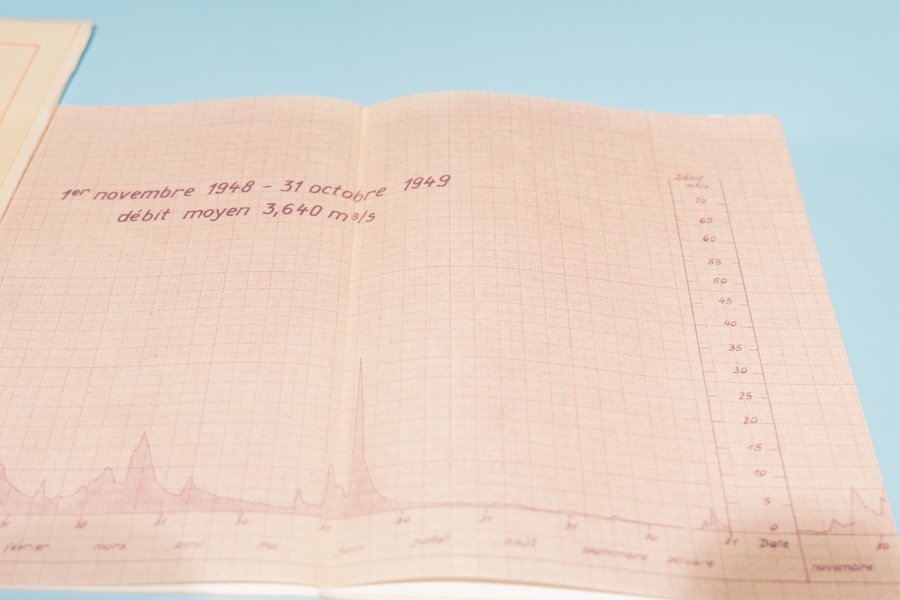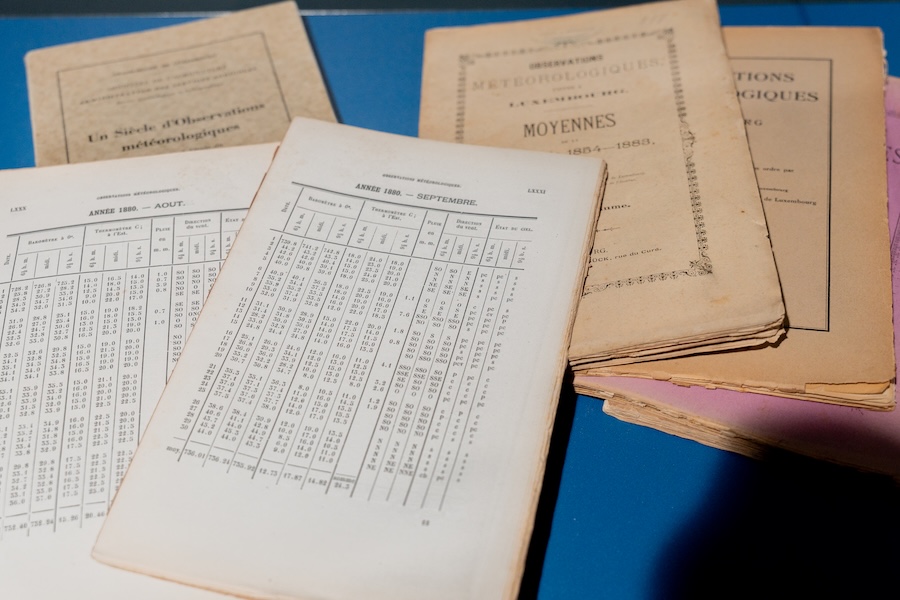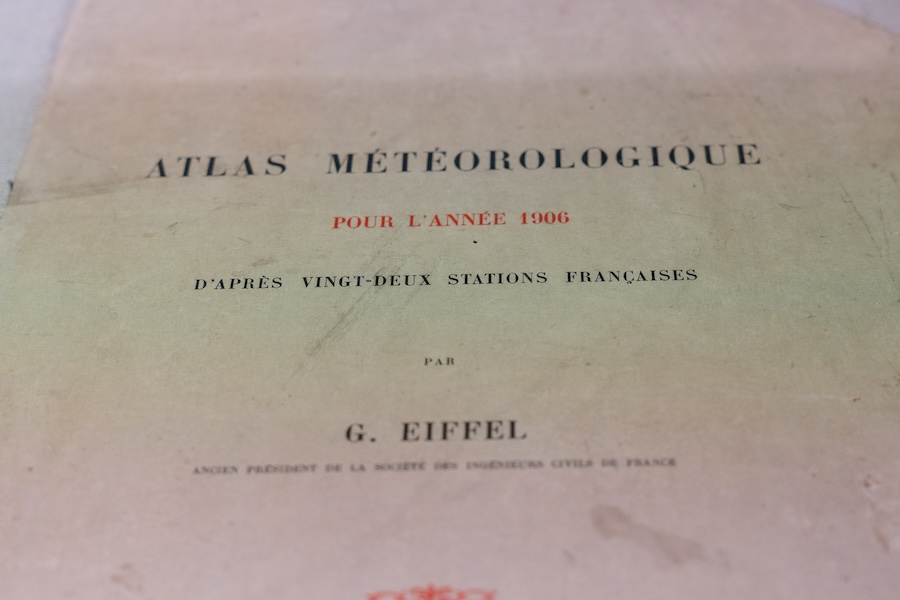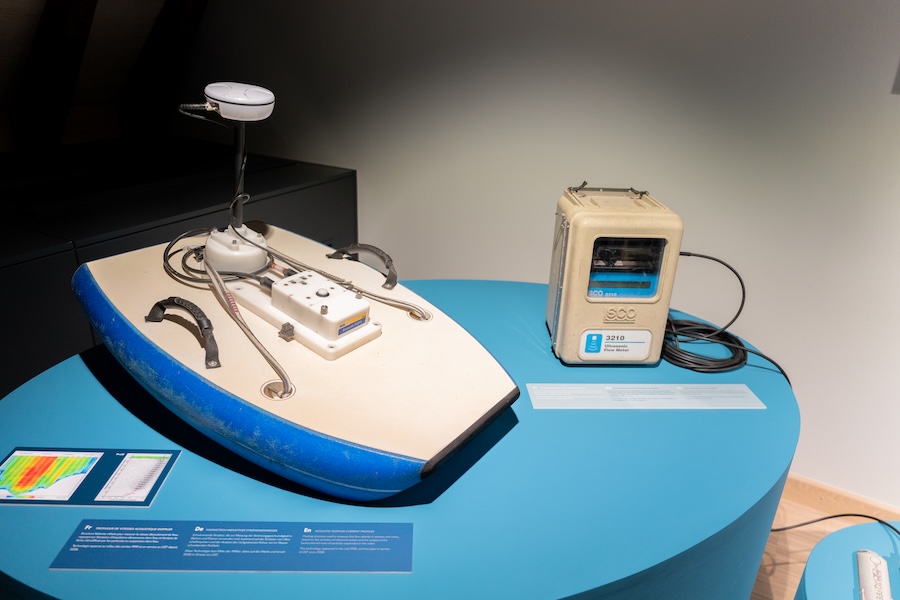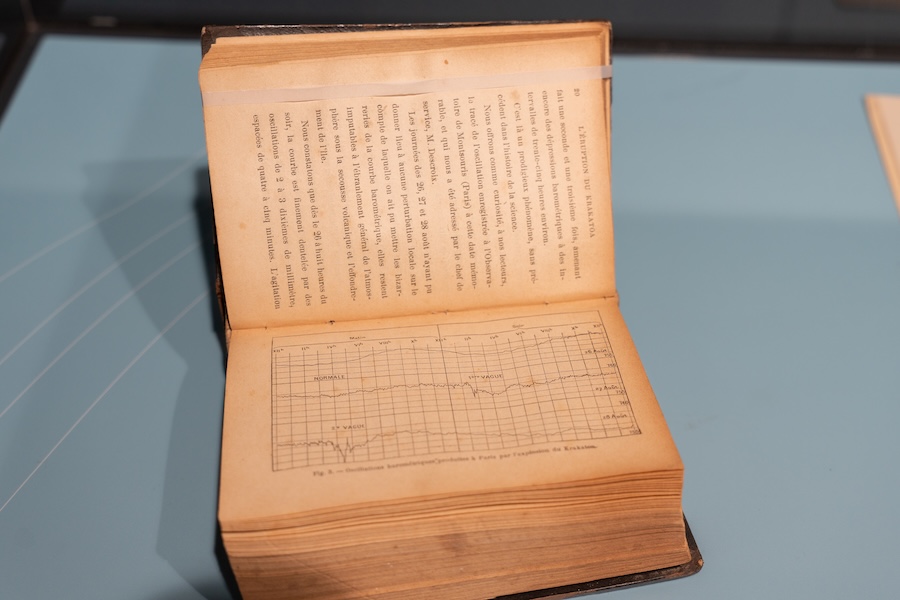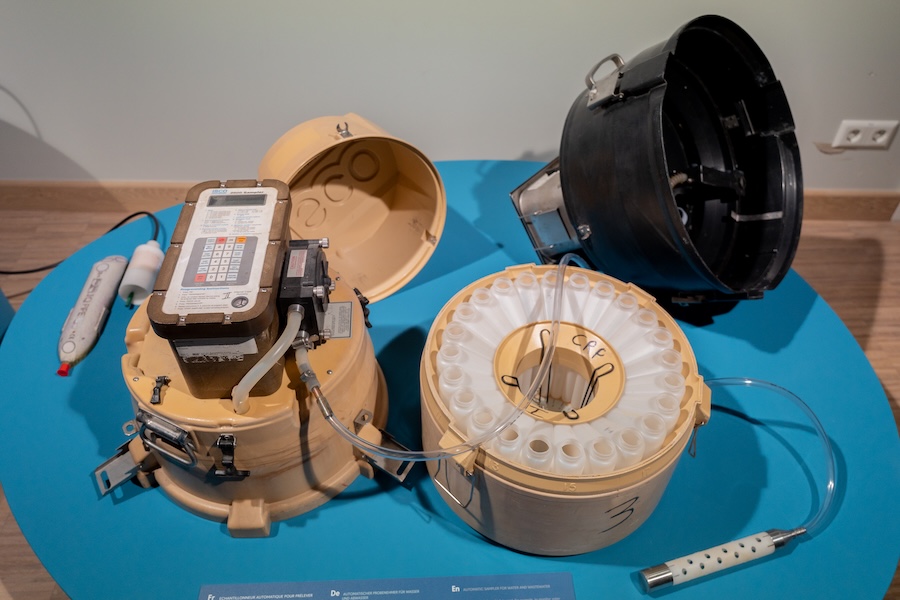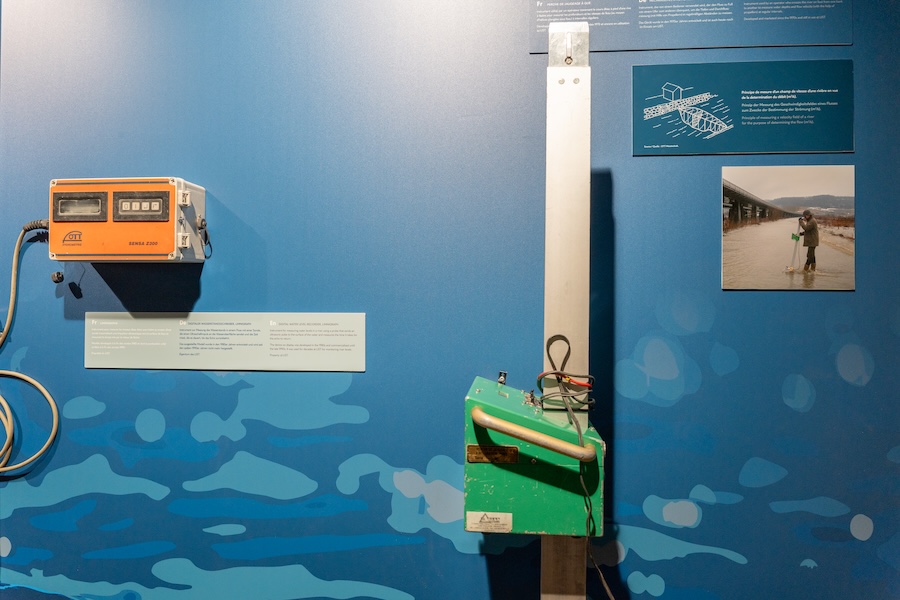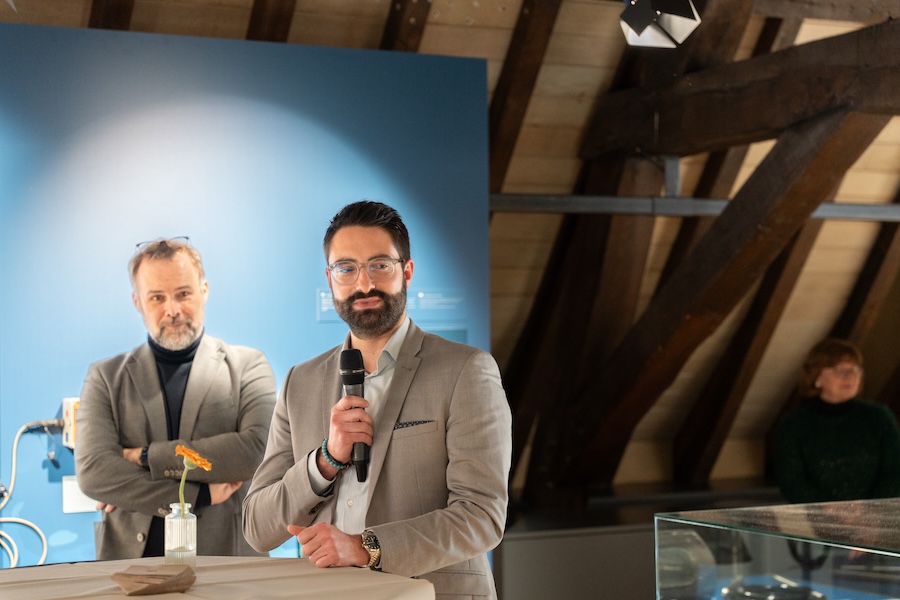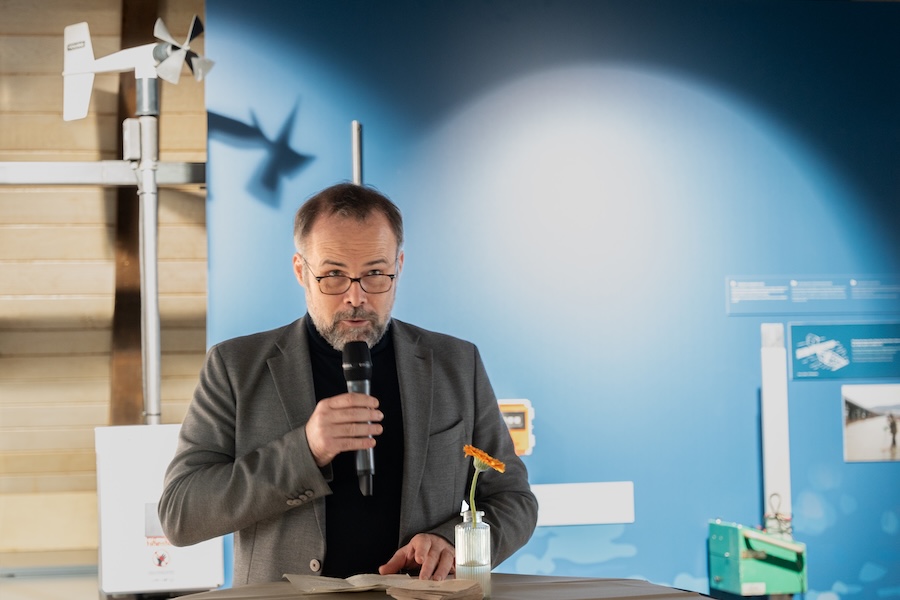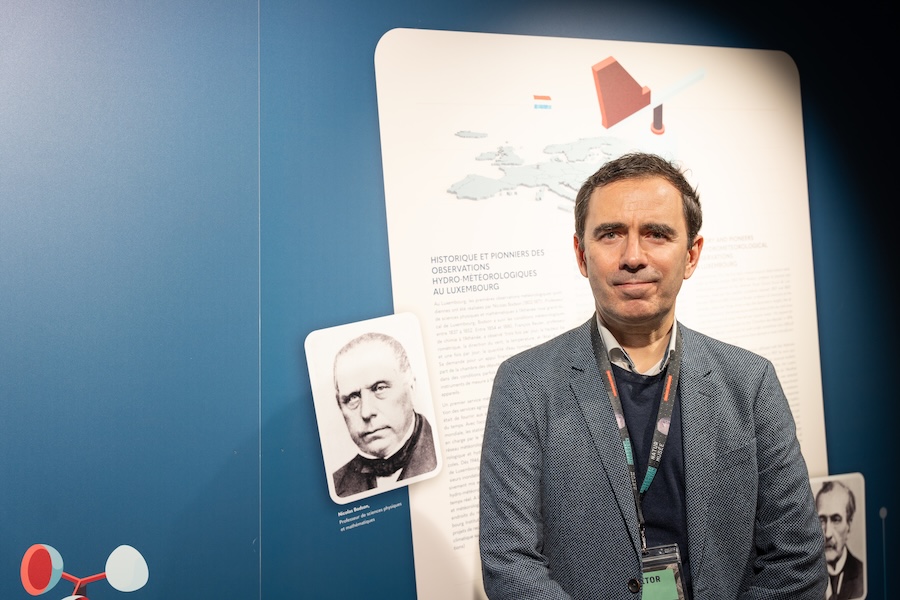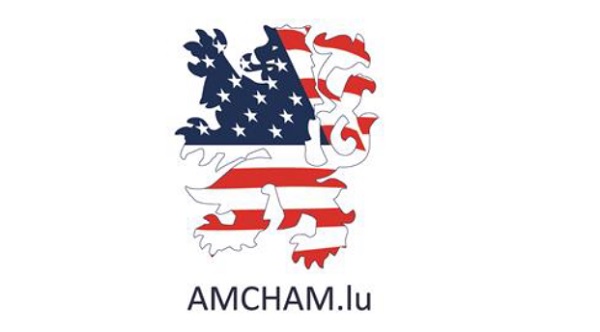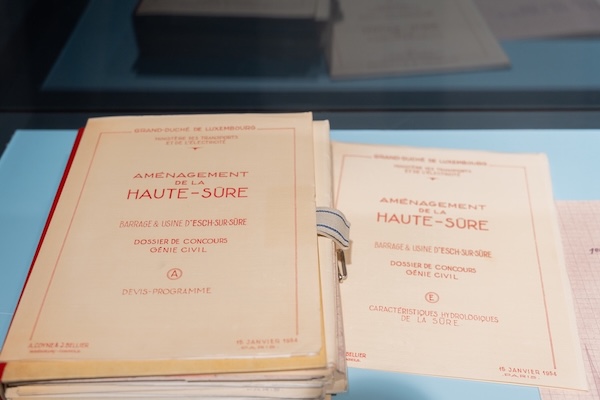 Luxembourg’s rivers and climate through the ages;
Credit: Ali Sahib, Chronicle.lu
Luxembourg’s rivers and climate through the ages;
Credit: Ali Sahib, Chronicle.lu
A new exhibition entitled "Luxembourg’s rivers and climate through the ages" has opened at the Naturmusée in Luxembourg-Grund (25 Rue Münster), from 31 January to 16 March 2025.
On Thursday 30 January, a vernissage was held to preview the exhibition, with both Patrick Michaely, museum director, and Laurent Pfister of LIST, the exhibition curator, in attendance.
Floods and droughts are among the most devastating natural disasters worldwide today – and the fact that modern societies are repeatedly unable to effectively prevent these threats is often due to a lack of historical perspective. Instrumental measurements usually only cover the last 200 to 300 years and thus provide an incomplete picture of climatic changes. These data gaps can lead to serious misjudgements – as the catastrophic flooding of the nearby Ahr in 2021 clearly shows. While statistical models categorised the event as extremely rare – occurring only every 2,000 to 10,000 years – model-based reconstructions based on historical water levels show that comparable floods have already occurred in 1804 and 1910.
The temporary exhibition ‘Luxembourg’s rivers and climate through the ages’ highlights this issue by means of historical instruments, documents and over 175-year-old weather and climate records and offers a unique opportunity to discover the development of water and climate measurements in Luxembourg. From the first rudimentary devices, whose values were recorded manually, to mechanical instruments that automatically recorded weather and water level fluctuations, the exhibition shows the history of meteorology and the progress in climate research. By combining historical and forward-looking approaches, the exhibition invites visitors to discover the importance of historical sources for understanding current and future climate phenomena. It opens up new perspectives on the challenges and opportunities in a changing world.
This exhibition is the fruit of a collaboration between the Section des Sciences de l'Institut grand-ducal, the Luxembourg Institute of Science and Technology (LIST) and the National Museum of Natural History. It follows on from the joint publication ‘Contribution à la climatologie du Luxembourg. Analyses historiques, scénarios futurs’ (2005), which the museum published with the former Centre de recherche Gabriel Lippmann (now LIST).
Talking with Chronicle.lu at the vernissage, Patrick Michaely, museum director, stated "It is an exhibition about climatology ... due to an collaboration during, I would say, more than 50 years with some institutions in Luxembourg, among them the museum, of course, but also the Luxembourg Institute of Science and Technology. The scientific section of this institute ... Luxembourg scientists are in it. Over 50 years we have collected a lot of data and so it was time to present it one time to the public. And that is one reason. The second reason is, of course, we are a natural history museum and the effect of climate change always had an effect on fauna, on flora. So that is documented in our other exhibitions also. It is an important topic for everybody. So I would say it is a nice complement also to the other temporary exhibition ... about geology and the effects of geology on fauna and flora and culture and so on".
Laurent Pfister, Head of Environmental Sensing and Modelling Unit at the Luxembourg Institute of Science and Technology, told Chronicle.lu "It's all about 175 years of hydrological and meteorological measurements, and how the technology has evolved over those almost two centuries. The difference between now and then being that there was only one station in the whole country, a meteorological station, and we would need an observer taking care of the instrument, reading the measurements like temperature, air humidity. We would need an observer, so this is what is also shown in the exhibition; we have instruments that are connected to computers that are connected to mobile phones that are transmitting data every minute almost. So it is a whole different story and also we use those real time measurements nowadays for predictions of how the weather will be in a few hours from now, will there be a floodwave coming, how big will it be? All this was not possible 200 years ago."
He continued "Then what we also show is historical records, so going back for one example, more than 200 years. The end of the 18th century, those are recordings from part of Italy. So where people were already recording the weather, like how much rain and temperature and they would try to relate that to public health. So if people would get sick or if there would be, for example, a good year for agriculture or a bad year for agriculture, they would try to relate to the meteorological conditions. So you see it is all kinds of different aspects that are covered by the exhibition and all about the history of hydrological measurements and meteorological measurements".

